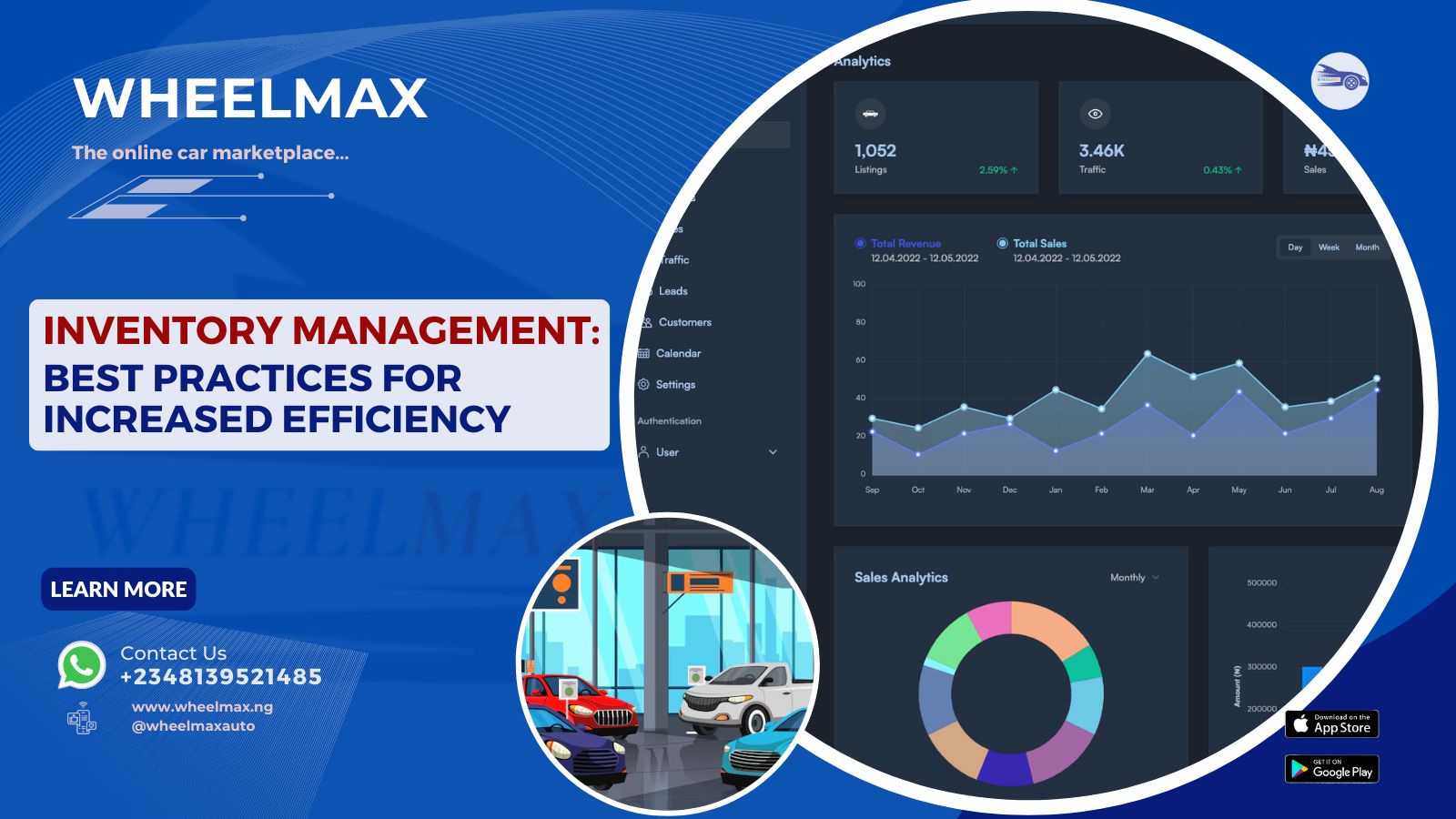Inventory Management Best Practices for Increased Efficiency
Inventory Management Best Practices for Increased Efficiency
Introduction
Effective inventory management is crucial for car dealerships to maximize profitability and streamline their operations. Efficiently managing your stock not only reduces holding costs but also ensures that you have the right vehicles available to meet customer demand. At Wheelmax, we understand the importance of optimized inventory management. This article will guide you through the best practices for utilizing inventory tools, tracking your stock, and reducing holding costs, ultimately helping you increase efficiency and grow your business.
1. Utilizing Inventory Management Tools: Your Tech-Savvy Advantage
Leveraging available tools is key to efficient inventory management:
- Wheelmax Platform Tools: Use Wheelmax's inventory management system to upload, organize, and track your vehicle stock. Take advantage of features like bulk upload and categorization.
- Spreadsheets and Databases: If you need a simple approach, use spreadsheets or databases to track vehicle details, condition, location, and pricing.
- Specialized Inventory Software: Explore using specialized inventory management software if you have a larger inventory, as it can provide advanced features like reporting, alerts, and integrations with other systems.
- Mobile Apps: Utilize mobile applications designed to manage inventory, allowing you to make updates from anywhere with an internet connection.
2. Tracking Your Stock: Knowing What You Have and Where It Is
Effective tracking is essential to minimize losses and maximize sales:
- Detailed Records: Maintain accurate records for each vehicle, including make, model, year, VIN, mileage, condition, cost, and purchase date.
- Location Tracking: Implement a system to track the exact location of each vehicle, whether it is on the lot, in the service bay, or being transported.
- Regular Audits: Conduct regular physical audits of your inventory to ensure that records align with the actual stock.
- Condition Updates: Keep track of the condition of vehicles and update records as needed to reflect any repairs or changes.
- Sales Data Analysis: Analyze your sales data to understand which vehicles sell faster and which ones linger, allowing you to adjust your purchasing strategy.
3. Reducing Holding Costs: Maximizing Profitability
Holding cars for too long can eat into your profits. Here’s how to minimize those costs:
- Right Pricing: Use market data and competitor analysis to price your cars competitively and avoid overpricing, which can slow sales.
- Quick Sales Strategy: Prioritize quick sales with promotional offers and marketing efforts.
- Aging Vehicle Identification: Use your tracking system to identify older inventory that has been sitting for too long, and implement strategies to move them, such as price adjustments or special sales.
- Optimized Purchasing: Adjust your purchasing strategies based on your sales data to avoid buying too many cars that will sit idle for long periods.
- Efficient Logistics: Reduce transport costs by optimizing your vehicle transport and delivery processes.
- Strategic Stock Levels: Based on demand patterns, maintain strategic stock levels that are high enough to meet demand but low enough to avoid excess stock.
4. Leveraging Wheelmax to Sell Faster
Wheelmax provides sellers with key tools to make sales faster. This increases efficiency of your inventory management processes:
- Detailed Listings: Create appealing and thorough listings to showcase your inventory to a wider audience.
- Competitive Pricing: Ensure your pricing is attractive to buyers and competitive in the current market.
- Fast Response Times: Respond quickly and professionally to any buyer inquiries that come through the platform.
- Track Performance: Monitor which vehicles generate the most leads and adjust your strategy accordingly.
5. Continuous Improvement: A Cycle of Optimization
Inventory management is an ongoing process. You should always:
- Track Metrics: Continuously track key metrics like turnover rate, holding costs, and days in inventory to see how well you are managing your stock.
- Regularly Review Processes: Regularly assess your inventory management practices to identify areas for improvement.
- Adapt to Market Changes: Be prepared to adjust your strategies to adapt to changing market conditions and customer demand.
Conclusion
Effective inventory management is essential for car dealerships looking to increase efficiency, reduce costs, and maximize sales. By utilizing inventory tools, tracking stock effectively, and implementing strategies to reduce holding costs, you can streamline your operations and create a more profitable business. Wheelmax is here to support you with tools and resources to optimize your inventory management and ultimately, grow your business. Start managing your inventory more effectively today!
